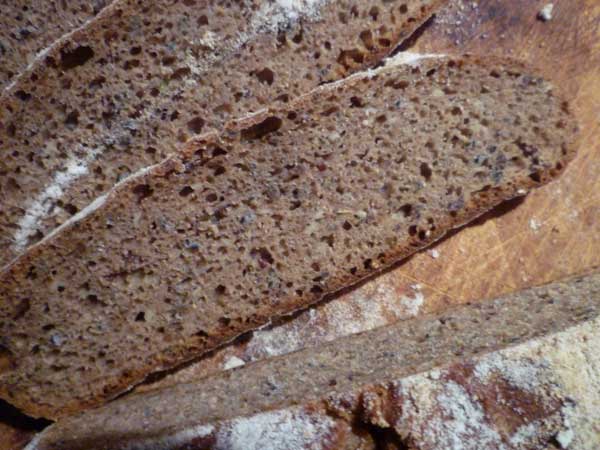 |
| What happens when you make bread in a tornado warning? Nothing -- as long as one doesn't touch down. |
Recent late summer storms have tossed huge damaging tornadoes across our region. A few days after the pretty town of Goderich on Lake Huron was devastated by a tornado that touched down, an incredibly large storm swept in from the lake and across Southwestern Ontario. We watched the skies darken early all through the Tornado Watch; and when the Tornado Warning came, we huddled in our basement, under the stairs, until the all-clear came, and the night of rain and lightning.
But I did have to run upstairs a couple of times to check on my bread, which was baking in the oven. It just so happened that the Tornado Warning occurred precisely at the time that the bread needed to be baked. So what was I supposed to do? I proofed it an hour longer than I felt I should have, then went ahead and baked it.
Luckily, no tornado touched down in our locale. The closest one did take out a barn and a tree nearby; other funnel clouds were spotted but apparently none touched down near us.
What was in the bread?
I was looking in my cupboard for some flax seeds, but I must be out of those. But as I was snooping around the strange things I've collected, I came across a few interesting grains, and I thought I'd try them in a bread. I was making 2 different doughs with 2 different wild yeast starters (enough to make 4 breads): one with the official Tartine starter, and one with my 100% whole wheat wild yeast starter, also at 100% hydration. Both breads were 60:40 flours. The one using All Purpose flour was 40% whole wheat; the one using Whole Wheat flour was 40% rye.
On the second turn in the bowl, I added to each dough about half of the following:
- 2 oz Farmer Girl Hột é Sweet Basil Seed from Vietnam
- 200mg Manitoba Harvest Shelled Hemp Seed from Manitoba
- 56g Red Quinoa from the bulk food store; probably comes from California
 |
| Basil, hemp and quinoa seeds |
I made a mistake with the Basil Seeds. I assumed that this seed would simply act like a poppy seed, and just add a little crunch, and a little flavour. Perhaps it did, but the Vietnamese use it differently. They add it to a cold drink, and the tiny seeds swell up and look like fish-eyes, an almost gelatinous texture. I should have soaked these tiny seeds first. In Indian Ayurveda, basil seeds are said to be calming and beneficial for Asthma. Other benefits are also listed. It is considered a sacred plant throughout Asia where it was first grown.
Hemp seed supposedly contains a lot of Omega-3, but you have to keep the temperature below 350 degrees to get any benefit from it. You might think that leaves out bread -- but the temperature of the interior of the loaf may not actually get as hot as the oven (bread is considered done when the internal crumb temperature reaches 190-210 degrees F). Shelled hemp is kind of expensive, but pretty darn healthy. The seeds are kind of invisible in the crumb of the bread.
Another sacred plant is Quinoa, regarded as the mother of all grains by the Incas. It is not a true grain though, but the seed of a chenopod. Its protein is more complete than wheat. I love to toss red quinoa into bread because of the colour, and because I know its healthy eating.
Results
 |
| the seeds are added and turned into the dough |
Suddenly I'm bartering bread.
The 60:40 Whole Wheat: Rye loaf:
The 60:40 all purpose: whole wheat loaf:
Notes to Myself
- Next time, try soaking the basil seeds. Fish-eyes in the bread might be sort of interesting.
- Got to try that sweet basil seed drink.












glad the tornadoes stayed at bay
ReplyDeletethat's dedication, to continue your bread baking even with a tornado threatening.